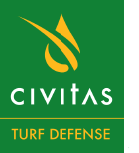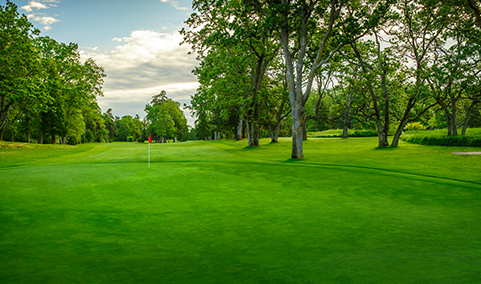


Strengthening Turf Quality through Golf Course Turf Maintenance
Ultimately, superintendents are judged or revered by one thing – turf quality. But turf quality is a relative term. Depending who we ask we get a very different answer. A golfer might define it as dark green, rich turf. A researcher may point to the overall health and strength of the turf. But as superintendents we have to consider and appease everyone, understanding that although some factors are more important, it’s really all of these things - and more.
Assessing Turf Quality
To remove some of the subjectivity the National Turfgrass Evaluation Program (NTEP) provides a more consistent evaluation. They define Turfgrass quality as a measure of aesthetics and functional use and have developed a 9-point visual rating system. When it comes to quality turf, 9 is outstanding, 1 is dead and anything above 6 is considered acceptable. Ranking Turf Quality accounts for a combination of color, density, uniformity, texture and disease or environmental stress.
Since NTEP still relies on a visual evaluation there is obviously some subjectivity involved. Therefore, some superintendents have turned to Normalized Difference Vegetation Index (NDVI) meters. But since these meters measure the amount of light bounced back from a leaf, products with pigments can skew these results so they’re not necessarily accurate either.
At the end of the day, unless you know what to do to make improvements it doesn’t matter how you measure turf quality. Here’s what you need to know.
CULTURAL PRACTICES: Golf Course Turf Management
Irrigation
Turf is a plant and plants need water, simple right? Wrong. As we know there are many, many factors that determine the amount of water required. The species of turfgrass, its root length, the soil type, composition and compaction, evapotranspiration, amount of organic matter, the temperature, cloud cover, rainfall, topography of the course… well you get the idea. It sometimes seems like it would be easier to bend a spoon with your mind than to consider every factor and get it all right.
When to Water
To make accurate decisions on watering use, superintendents use one of two basic methods:
Based on soil water content - In the old days this was done by feeling the soil. Now many use TDR soil moisture meters. Either way the point at which the turf wilts is based on past experience. Watering decisions are based on daily measurements and water is applied to keep the soil moisture above that point.
Based on Evapotranspiration or ET. This is the measurement of how much water is lost to the atmosphere. Watering is then done to replace ET lost since the last irrigation or rain event.
Either way, we suggest watering after midnight and before sunrise. It results in less evaporation and limits the amount of time leaves are left wet thereby lowering their susceptibility to disease.
How to water
Multiple
Cycling is an effective way to provide water the time to soak into the
soil rather than runoff. Apply only a portion of the total water needed
to an area and then switch to another area on the course. This gives the
water time to penetrate the soil while the other area is being watered.
The original area is then watered again and the cycle continues until
the total required water has been applied.
Organic Matter
The beauty of turf is more than just skin deep. Turf quality has a lot to do with what’s going on below the surface. Organic matter in the top 3 to 6 inches holds water and nutrients, insulates and provides cushioning. But when it builds up quicker than it decays it reduces water penetration and restricts the exchange of gas between the soil and atmosphere. It also promotes surface rooting, which increases runoff and reduces the effectiveness of fertilizer and pesticides. It can lead to anaerobic conditions making turf more susceptible to diseases. Wetting agents can provide relief but don’t fix the problem.
Fertilized turf produces more biomass and more organic matter. Decomposition also increases but only so much. Our suggestion is to carry out cultivation practices in a manner that offsets the rate of accumulation of organic matter. This can be done by core cultivation, topdressing, verticutting etc.
Mowing
When done properly, mowing greatly influences turf density and limits surface water runoff. But there are many factors that influence density including type of mower, frequency, height and clipping management. We can maximize turf density when we choose the right combination.
Height
Different
parts of the course require different heights - aesthetics also comes
into play here. But lower heights require more maintenance to preserve
turf density because the lower the turf the shorter the roots. Of course
this is where proper irrigation and nutrients have a big impact. With
ideal heights, a sufficient underground biomass exists to retain
additional water and nutrients.
Frequency
Generally
speaking, the more we mow the greater the turf density. But every
turfgrass species has an ideal height. By maintaining the turf within
its tolerance range we can achieve optimal turf density.
Equipment
Regardless
of the mower type it’s imperative to keep the blades sharp and properly
aligned. Otherwise turf stress increases from wounding, making turf
more susceptible to disease, reducing turf density.
Rotary mowers are best for heights above 1.5 inches whereas reel mowers are ideal for heights below 1 inch. Be sure to sharpen blades after every 10 hours of use.
Clippings
Clippings
are nutrient rich and should only be removed if the function of the
site requires it. Clippings help maintain the nutrients in the soil and
reduce the need for fertilizer. So whenever possible… leave them.
Soil Management
Oxygenated turf soil permits maximum root development, proper water penetration and adequate microbial activity which means less runoff and better retention of chemicals. But traffic causes soil to become compacted, less permeable and therefore requires soil modification. The roots are essentially left gasping for air.
There are a number of forms of soil modification including hollow, solid and needle tines and both dry and water injection. Hollow tines ease compaction and remove problematic soil layers. Solid tines increase infiltration and gas exchange. Water injection and needle tines improve infiltration and gas exchange without disrupting the turf surface. Not surprisingly they’re what most golfers prefer.
Topdressing
A regular application of topdressing (sand or soil) is one of the best ways to manage surface organic matter. And it’s even more effective when combined with a form of cultivation. Cultivation removes some organic matter and topdressing dilutes it further - reducing runoff, increasing permeability and alleviating compaction.
Delayed Leaf Senescence
Leaf senescence is a natural process of aging in turf. It’s characterized by a thinning turf canopy and leaf yellowing caused by the loss of chlorophyll and photosynthetic activities. It’s the same process that causes autumn leaves to change color in deciduous trees. In addition to this normal age-related development, anything that causes stress to the turf can lead to accelerated leaf senescence. Kind of like when you used to sunbathe with baby oil back in the day.
If senescence is a natural part of life for turf, surely like people, strong turf will live a healthier life well into its golden years. So perhaps short of botox for grass there’s a way to turn back the clock and reverse or at least slow down the aging process and the signs of aging.
Abscisic acid, Cytokinin and Ethylene are three of the prominent phytohormones that play a role in leaf senescence. Anything that can inhibit endogenous ethylene or increase cytokinin levels may be used to improve heat tolerance and postpone leaf senescence. CIVITAS TURF DEFENSE™ delays leaf senescence by strengthening the plant and lowering its stress.
CHEMICAL INPUTS: Golf Turf Maintenance
When it comes to guarding turf against pests and disease the best approach is a preventative one. With increasing regulations and decreasing budgets anything that enhances the efficiency of an IPM program is a good thing. So think preventatively and use chemical control as a last resort and only when turfgrass quality and playability is unacceptable.
When chemicals are necessary, early intervention treatments with lower toxicity or spot treatments can often be used. We recommend the least disruptive option that is still effective.
Fungicides
With nearly 150 fungicide products, representing 35 active ingredients – each with its own mode of action, mobility in the plant, spectrum of activity, resistance issues and regulatory concerns… to put it lightly, it’s complicated. Here are some basics.
Fertility
The relentless pursuit of turf quality… every superintendent’s obsession.
Boosting turf quality involves carefully, almost magically, balancing a plethora of variables. Essentially it’s the turfgrass equivalent of threading a needle. Turf Quality… part art, part science, and all on you - the superintendent. 24/7. Well as they say, no rest for the wicked, but if you need our help we’re here to lend our support in your never-ending pursuit of perfection.